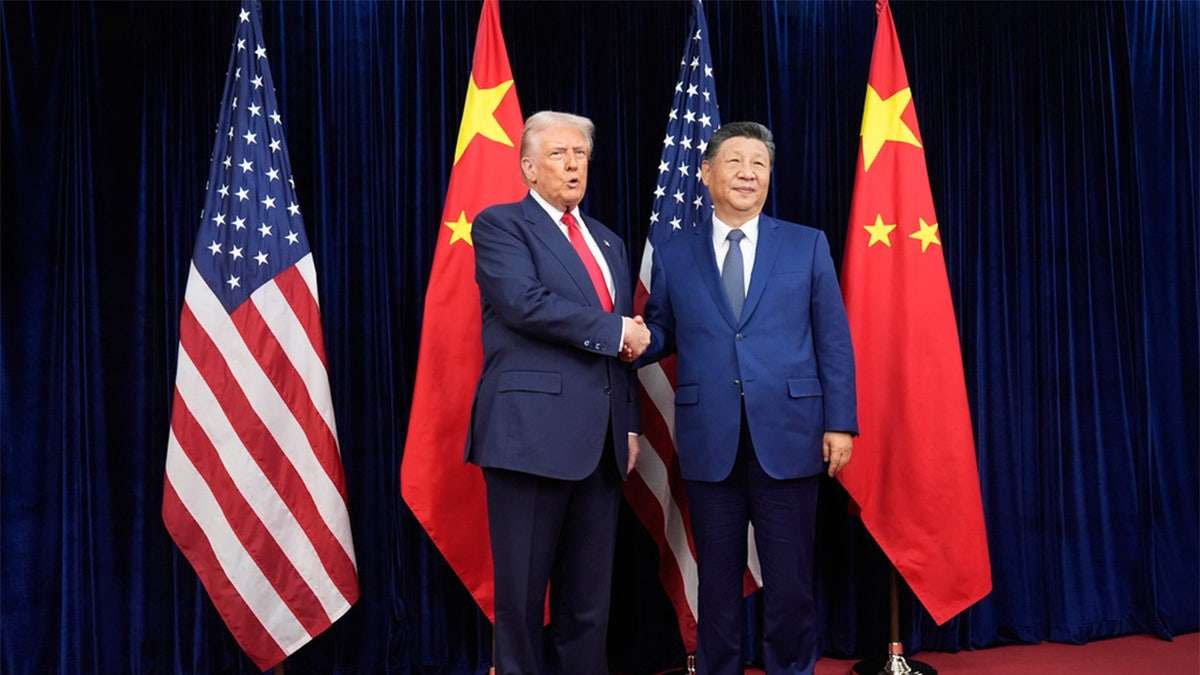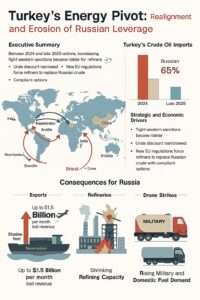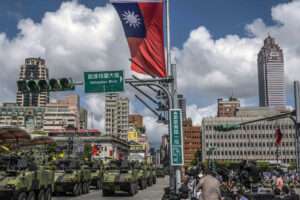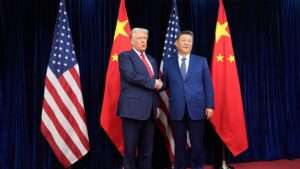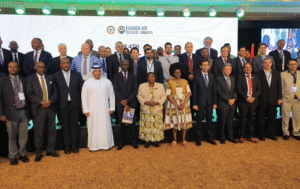By Asiimwe Angel
In a whirlwind week that showcased American diplomacy at its boldest, President Donald J. Trump returned from Asia with concrete commitments totaling billions in investments, tariff relief, and a pivotal trade truce with China. The capstone was a landmark economic agreement with Chinese President Xi Jinping, forged on the sidelines of the Asia-Pacific Economic Cooperation summit in Gyeongju, South Korea. Dubbed a “massive victory” by the White House, the deal addresses fentanyl trafficking, critical minerals supply chains, and agricultural exports—priorities Trump has hammered since his return to office.
“This historic agreement puts American workers, farmers, and families first, while safeguarding our economic strength and national security,” the White House declared in a fact sheet. It’s a temporary ceasefire in the U.S.-China trade war, averting Trump’s threatened 100% tariffs on Chinese goods and extending a fragile truce for at least a year. Markets responded positively, with U.S. stocks climbing and China’s indices holding steady, though questions remain about whether this is a genuine reset or merely a pause before the next escalation.
The agreement, finalized during Trump’s meeting with Xi at Gimhae Air Base in Busan, spans fentanyl control, rare earth minerals, semiconductors, and agriculture. It follows months of brinkmanship, including China’s announcement of sweeping export controls on rare earths—vital for electric vehicles and fighter jets—that had rattled global supply chains.
Beijing’s pledges aim to ease U.S. pain points without fully dismantling its strategic levers. China will halt shipments of designated precursor chemicals to North America and impose strict global export controls on others, targeting the opioid crisis that claimed over 100,000 American lives last year. This builds on prior talks but adds enforcement measures.
China will suspend its new export controls on rare earths and issue general licenses for exports of rare earths, gallium, germanium, antimony, and graphite to U.S. end-users worldwide. This effectively rolls back restrictions from earlier in 2025 and 2022, de-risking U.S. manufacturing. Analysts describe it as a “de facto removal,” though framed as a one-year delay.
China will end retaliatory tariffs and non-tariff barriers imposed since March 4, 2025, including removal from “unreliable entity” lists. It will resume trade from Nexperia facilities for legacy chips and terminate antitrust probes into U.S. firms in the supply chain. Nvidia’s CEO hailed it as a green light for competition in China.
A soybean bonanza includes 12 million metric tons for late 2025, plus 25 million metric tons annually through 2028, reviving U.S. farm exports that had shifted to Brazil amid prior boycotts. Purchases of sorghum and hardwood logs will resume. Trump touted billions in value, with long-term potential even higher.
China also extends tariff exclusions on U.S. imports until December 31, 2026, and lifts sanctions tied to U.S. investigations into maritime dominance.
The U.S. reciprocates with measured de-escalation. Tariffs on Chinese imports linked to fentanyl flows will drop 10 percentage points effective November 10, 2025, with reciprocal tariffs suspended until November 10, 2026, though the current 10% rate holds. Section 301 exclusions extend to the same date.
The U.S. will pause for one year implementation of end-user controls for affiliates of listed entities and responsive actions from the maritime investigation, allowing talks to continue alongside alliances with South Korea and Japan on shipbuilding.
Critics argue the deal tilts toward China, restoring market access without ironclad enforcement, echoing the unenforced Phase One pact from Trump’s first term. White House officials counter that it buys time to diversify supply chains, with Xi urging “stable industrial chains” at the summit.
The China accord crowns a tour that began in Kuala Lumpur, where Trump mediated a ceasefire between Thailand and Cambodia and inked reciprocal trade agreements with Malaysia and Cambodia. Joint frameworks for talks with Thailand and Vietnam followed, alongside critical minerals pacts with Thailand and Malaysia to counter China’s dominance.
In Tokyo, Trump met Japan’s new Prime Minister Sanae Takaichi and announced projects under Japan’s $550 billion U.S. investment pledge to revitalize American industry. A landmark minerals agreement, historic energy purchases, and anti-drug trafficking cooperation rounded out the visit. Trump floated resuming nuclear talks with North Korea.
South Korea delivered billions in commitments for U.S. jobs, energy dominance, tech leadership, and maritime ties. President Lee Jae-myung awarded Trump Korea’s highest civilian honor. Tariffs on Korean autos drop to 15%, aligning with Japan and the EU.
“From peace in Southeast Asia to prosperity across the Pacific, this trip delivered historic wins,” Trump said upon returning to Florida, where he hosted a Mar-a-Lago Halloween event hours later.
For American farmers, the soybean surge means bigger yields and profits. Tech firms gain stability with chip flows resuming, and rare earth relief shields against factory shutdowns. Globally, it dials back chaos threatening Europe’s auto sector and U.S. deficits.
Skeptics warn the tariff paring could tilt the field back toward China, undermining decoupling efforts. Enforcement remains the wildcard; past deals faltered without it.
As Trump eyes a 2026 Xi summit in Beijing, the deal’s true test is implementation. For now, it’s a page from the art-of-the-deal playbook: bold moves, big headlines, and breathing room for America First. Markets hit highs, but in geopolitics, truces set up the next round.

